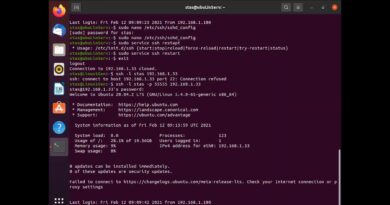DHCP for IPv4 and Configuring it on Cisco Router – CCNA 200-301
Welcome to Network Engineer Pro. I’m Rafael, CCIE #64356 in routing and switching.
I’m working on ton of content (videos, labs and more) to help you learn networking. If you want to stay up to date on what I’m working on and be the first to know then head to my website where you can sign up and get notified:
➤ https://www.networkengineerpro.com/
You can also follow me on Facebook:
➤ https://www.facebook.com/NetworkEngineerPro
And Instagram:
➤ https://www.instagram.com/network_engineer_pro
————————————————————————————————————————
Configuring part of this video starts @16:07
In this video I talk about the DHCP and the DHCP Relay aka “the IP Helper” as it relates to Cisco networking and the CCNA (200-301) exam. Not just theory but hands on the CLI with a mini configuration challenge. I go into detail with debugs, wireshark captures and more. I do my best to make the content engaging and fun. I hope it helps you in your journey to learn networking.
I put great effort into making sure I’m providing the most accurate information. If you notice anything that doesn’t sound right or you have a question feel free to let me know.
DHCP stands for dynamic host configuration protocol and is a network protocol used on IP networks where a DHCP server automatically assigns an IP address and other information to each host on the network so they can communicate efficiently with other endpoints.
In addition to the IP address, DHCP also assigns the subnet mask, default gateway address, domain name server (DNS) address and other pertinent configuration parameters. Request for comments (RFC) 2131 and 2132 define DHCP as an Internet Engineering Task Force (IETF)- defined standard based on the BOOTP protocol.
————————————————————————————————————————*Regarding the broadcast bit I mention and demonstrate in the video.
DHCP server either broadcasts or unicasts a DHCP Offer/Ack message depending on the Broadcast Flag value of DHCP Discover/Request messages. The following texts from the DHCP standard [1] are quoted to objectively support such finding about the DHCP message operation.
This is from RFC 2131 “Dynamic Host Configuration Protocol”
If ‘giaddr’ is zero and ‘ciaddr’ is zero, and the broadcast bit is set (in DHCPDISCOVER and DHCPREQUEST messages), then the server broadcasts DHCPOFFER and DHCPACK messages to 0xffffffff
If the broadcast bit is not set and ‘giaddr’ is zero and ‘ciaddr’ is zero (in DHCPDISCOVER and DHCPREQUEST messages), then the server unicasts DHCPOFFER and DHCPACK messages to the client’s hardware address and ‘yiaddr’ address
The Broadcast Flag value in a DHCP message varies (0 or 1) depending on TCP/IP implementation-specific nature of a client PC. Some client PCs can NOT use an IP address as its destination address and receive a unicast packet at this address until the IP address is finally allocated through a DHCP Ack message. In such case, the client PC has already been programmed to send a DHCP Discover/Request message with “Broadcast Flag=1”. As opposed to it, if the client PC (Windows PC) can receive a unicast packet even before IP allocation, it has been programmed to send a DHCP Discover/Request message with “Broadcast Flag=0”.
ipv4



